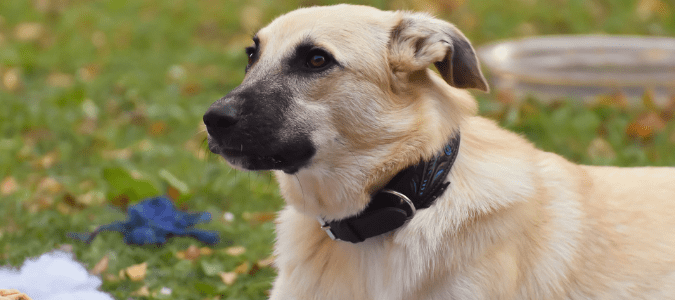There’s not much that’s worse than spending time outdoors in your yard, only to be bothered by the tiny tickle of fleas jumping onto your feet and ankles. Then, there are those itchy bites they leave behind. If you suspect you have a flea infestation in your yard, it’s time to take action, because it will only get worse if left untreated. Fleas can lay up to 50 eggs a day, and they can live a long time if conditions are right. A flea infestation in the yard can be tough to get rid of without the help of a pest professional.
When fleas infest a yard, they are probably first introduced by wild animals like squirrels, possums or raccoons that spend time in your yard. This can also happen if a wild animal with fleas dies in your yard. When fleas lose the animal host they were living and feeding on, they’ll jump off and seek out another host, such as your dog or cat that spends time in the yard.
Identifying Fleas
Fleas look like a speck of black pepper. Fleas are actually a dark reddish-brown color, but they look black to the naked eye. Their bodies are flattened from side to side, which helps them weave very quickly through an animal’s fur when they’re trying to hide. This can make them hard to see when you’re looking at your dog’s fur. You might think you spot a flea, only to second-guess yourself when it disappears a moment later.
Fleas can live out their whole lives on dogs, cats and other furry animals, but they don’t live on humans. They will happily bite us for a blood meal, though. Flea bites on people usually leave little, red, itchy welts. Most people find them on the lower parts of their bodies, like their feet, ankles and lower legs. This is because fleas can jump onto you, but they can’t jump more than about a foot in the air. (Still, that’s pretty high—it’s more than 200 times the flea’s own body length!)
While flea bites are mostly just annoying for people, fleas can cause a lot of problems for pets. Their bites can trigger allergic reactions in dogs and cats, causing red, inflamed, flaky skin that is incredibly itchy. The constant itching can even cause psychological problems for animals. For example, some animals may develop anxiety or obsessive-compulsive behavior. Fleas can also cause anemia in animals and can transmit dangerous infections and tapeworms. These are just some of the many reasons to get rid of fleas when you discover an infestation in your yard or house, or on your pet.
How To Check For Fleas
One of the best ways to tell if you have fleas infesting your yard is to walk through your yard wearing tall white socks. If there are lots of fleas present, you’ll be able to see them when they jump onto your socks. Once you know you have a yard full of fleas, what should you do next?
First, you should check your pets and your home for signs of fleas as well. This is so you’ll know the full scope of the problem, so you can be thorough in resolving it. When fleas are present in a yard, they can easily move indoors on the family pet. So, it’s likely that if you have pets, you have fleas indoors if they’re outdoors as well.
Usually, the most obvious sign that your dog or cat has fleas is that it scratches a lot. Other signs include flea dirt in the pet’s fur. Flea dirt looks like little black specks that are most often clustered on the animal’s belly, near its groin. You may also see actual fleas, alive or dead. You might find fleas and flea dirt on your animal’s bedding as well, or anyplace where they spend a lot of time, such as on the sofa or on a certain rug or cushion. Red, swollen, irritated skin on the animal’s belly or inner legs is another sign of fleas. You may also notice spots where your pet’s fur is thin and the skin underneath looks flaky and irritated.
The most effective flea control begins with getting rid of fleas on the animal that is infested with them. You can consult with your veterinarian for the best way to treat your pets for fleas. This might include a topical, monthly flea medication, or some other method recommended by the vet. If wild animals outdoors have introduced fleas to your yard, you’ll need to take steps to get rid of fleas outdoors.
What To Do About Fleas
Outdoors, fleas thrive in tall, overgrown grasses and bushes. Thus, keeping your yard trimmed and maintained will go a long way toward reducing flea populations outside. Here’s what to do outdoors to keep fleas away:
- Mow your grass regularly and remove excess thatch at least once a year, in spring.
- Don’t overwater the grass, since fleas are attracted to excess moisture.
- Mulch garden beds with cedar mulch, which repels fleas.
- Keep bushes and other landscaping trimmed, so they won’t attract fleas.
- Keep the yard free of debris like piles of wood or empty pots and planters, as these are places where fleas might hide and lay eggs.
Inside, you can reduce flea populations by washing your pet’s bedding regularly and keeping up with your pet’s flea treatments.
These steps will help get rid of fleas, but if you have an extensive infestation, it’s a good idea to enlist help from a pest control specialist. These professionals have the best products and techniques to get rid of pests while keeping you, your family and your furry friends safe.
How to Identify Flea Eggs on Dogs
It can be hard to know if what you’re seeing in your dog’s fur might be flea eggs, dandruff, or something else altogether. The truth is, flea eggs on dogs are very hard to see and aren’t actually very common. This is because, while fleas do lay eggs on dogs, the eggs are tiny and slick. So, they soon fall out of the dog’s fur to the floor, into the dog’s bedding, or wherever else the dog spends time.
If you do see flea eggs on a dog, they will look a lot like grains of salt or sand. Flea eggs are actually smaller than a grain of sand, and are a clear or translucent whitish color. This is why it’s easy to mistake dandruff on a dog for flea eggs (or sometimes, vice versa). Female fleas usually lay 20 or more eggs at a time in clusters, but again, the eggs drop out of the dog’s fur pretty quickly. Wherever they land, they will eventually hatch, unless they are eliminated first.
Some people use a flea comb to find flea eggs in their dog’s fur. This is an effective technique, but just be warned that if you find any flea eggs on your dog, it’s a sure sign that there are even more eggs hidden in your home. They are most likely in the places where your dog spends the most time, such as in its bed or on a favorite rug or corner of the couch.
These areas will need to be treated for fleas and their eggs, or else the fleas will hatch and a full-blown infestation will result. Many people try to address flea infestations on their own using natural products like brewer’s yeast or garlic, but these have not been found to be very effective against fleas. While they might help repel a few fleas, they can’t address an infestation. Professional pest treatments are usually the quickest, most reliable and most thorough way to get rid of fleas so you and your pets can enjoy a flea-free home.
Do Fleas Live in Dirt?
Do fleas live in dirt? This is a question people often ask of pest control professionals when they’re dealing with a yard infested with fleas. Where exactly are the fleas living outdoors? The answer is that fleas do live in dirt. They can even thrive in dirt, as long as it’s warm and damp enough for them. Fleas living in dirt will die off if it’s cold enough—in the low 40s or below—but it has to be very cold for at least a week straight for the fleas along with their eggs and larvae to fully die off.
In areas of the country where it doesn’t get very cold for very long, even in the middle of winter, fleas living outside in dirt might slow down in wintertime but resurge again when it warms up in spring. This is why it’s not a good strategy to count on a cold winter to deal with an outdoor flea infestation. It’s best to use professional pest control treatments and support them with do-it-yourself strategies like keeping your yard maintained and laying out cedar mulch around trees and in garden beds to repel fleas.
ABC Can Eliminate the Fleas on Your Property
Dealing with a flea problem can be extremely difficult. Instead of struggling with home remedies for fleas, contact ABC Home & Commercial Services. We create custom pest treatment plans so that your particular problem is dealt with. That way, you and all your family members can feel at ease again.


